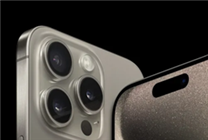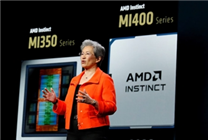Understanding the iPhone 17 Pro Max’s 2TB QLC Flash Storage: A Necessity or a Compromise?
Summary
- Pricing and Options: The iPhone 17 Pro Max’s 2TB storage option is priced at RMB 17,999, significantly more than the 1TB option at RMB 13,999.
- Technical Insights: Apple uses state-of-the-art QLC (Quad-Level Cell) flash memory for this model, presenting unique performance trade-offs.
- User Perspective: While concerns exist regarding QLC’s longevity and performance, practical usage scenarios suggest it may not pose significant drawbacks for everyday consumers.
As Apple unveils its newest flagship model, the iPhone 17 Pro Max, tech enthusiasts are buzzing about the extravagant price points and storage capacities. The top-tier option of 2TB memory climbs to an astonishing RMB 17,999, positioning it as the most expensive iPhone to date. When juxtaposed with the 1TB version priced at RMB 13,999, the cost of that extra terabyte seems excessively inflated at RMB 4,000. Interestingly, for the same amount, one could acquire multiple SSDs or even last year’s iPhone 16 on certain subsidized platforms.
However, the price isn’t the only matter of concern. New revelations suggest that the 2TB variant employs QLC flash memory, which has sparked discussions within the tech community. Traditionally, manufacturers have used multiple lower-capacity TLC (Triple-Level Cell) components stitched together; Apple’s move represents a radical shift in approach by opting for a single customized QLC chip.
What Is QLC Flash Memory?
Before delving deeper, it is crucial to understand the distinctions among various NAND types: SLC (Single-Level Cell), MLC (Multi-Level Cell), TLC, and QLC. These terms describe the number of bits stored in each memory cell, with SLC storing 1 bit, MLC 2 bits, TLC 3 bits, and QLC 4 bits per cell.
The fundamental operation relies on floating gate transistors, which determine if the circuit is powered or not, representing binary states of 0 or 1. With QLC, the complexity increases—think of it as dividing a container into 16 segments. The narrower voltage range inherent in QLC storage makes it less tolerant to mistakes and more susceptible to data degradation over time.
The Myths Surrounding QLC
Critics of QLC often highlight its shorter lifespan. For instance, if SLC can endure approximately 100,000 write cycles, QLC may only handle around 1,000. This decline in durability and slower read/write speeds renders QLC less desirable, particularly among enthusiasts and PC gamers who demand high performance.
Despite these drawbacks, the economic viability of QLC cannot be overlooked. The pricing model benefits from its ability to store more data per unit area, which dilutes production costs. Yet, the practical implications of lifespan still need consideration.
Longevity and Use Cases
While the theoretical lifespan of QLC may appear limited, real-world usage could tell a different story. A practical calculation indicates that even with a restrictive 1,000 erases, a 1TB QLC drive could effectively handle 1,000TB of data over its use, translating to about 14 years with moderate daily usage.
Moreover, contemporary implementations often utilize 3D NAND stacking, enhancing stability and service life compared to traditional 2D flash memory. Thus, general users don’t need to panic about potential degradation during typical use.
Counteracting QLC Drawbacks
One commonly employed strategy to mitigate QLC’s performance issues is the use of an SLC cache. By allowing part of the QLC storage to operate as SLC—storing just one bit of data—this method speeds up write operations and increases longevity. This layered storage technique effectively enhances the overall user experience, seamlessly accommodating daily tasks and applications without significant hindrance.
Conclusion: A Nuanced Perspective on QLC
Apple’s decision to incorporate QLC in the iPhone 17 Pro Max may generate concerns, but examining the benefits reveals a more nuanced picture. Advanced technology has its trade-offs, yet practical usage scenarios suggest that everyday consumers stand to benefit from the increased storage capacity at a geographical level.
As mobile technologies evolve, this adoption of QLC may pave the way for more cost-effective storage solutions across various platforms. While the market may initially regard these shifts with skepticism, it’s clear that innovations like these may ultimately democratize high-capacity smartphones for the average user.
Embrace the future of mobile technology with awareness and readiness to adapt, as the advancements we see today may redefine our expectations tomorrow.






